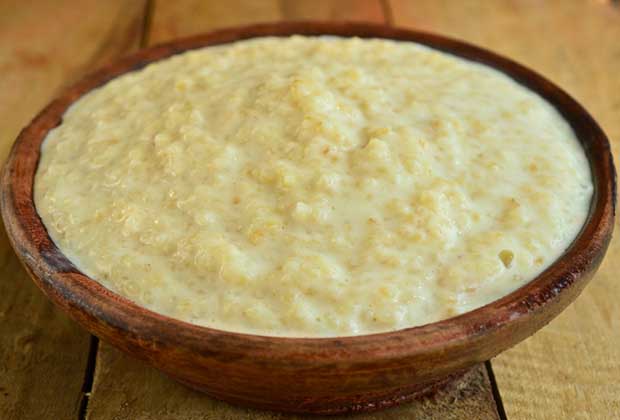Durga Puja Special: Deconstructing The Pujor Bhog
- By India Food NetworkLoading...
- | 10 Oct 2016 10:45 AM IST
 X
X
 Payesh is served in the last as dessert. Photo: Dreamstime
Payesh is served in the last as dessert. Photo: Dreamstime
Pujo for Bengalis is synonymous with new clothes, adda and of course food! And when we say food, we strictly mean non-vegetarian. While the rest of the country goes on a fast or abstains from meat and fish, we believe in bingeing on some of the most delicious chicken rolls, mutton biryanis and kosha mangsho!
Pujo also means bhog. A frugal meal, which is strictly niramish or vegetarian and served on shaal paata or plates made with dried saal leaves. So much so that it is cooked without garlic or onions. Quite a contradiction, nevertheless it is the one meal Bengalis would not refuse eating during Durga Puja.
So, what exactly is a bhog? In simple terms, bhog stands for a vegetarian meal that is typically offered to the Gods. It is what naivedya is to Maharashtrians. Pujor bhog is served in the afternoons at a pandal and is like a community lunch. Around 3-5 dishes go into making the bhog, and everything is cooked sans garlic or onions. Let's deconstruct it for you.
Bhoger khichuri: Khichuri or khichdi is commonly prepared across the country. In Bengali homes, the same is cooked with yellow moong dal and gobindobhog chaal, a variety of rice available in the eastern part of India. A simple tempering of spices like whole garam masala, ginger and bay leaf enhances the flavour of a bhoger khichudi.
Begun bhaaja: Begun is brinjal or eggplant. The soggy khichudi needed a crunchy element, and so begun bhaaja was invented. It pairs well too. Apply some salt and turmeric to cut eggplant and shallow fry them to prepare these absolutely unique Bengali fritters.
Labra: Sounds strange, right? But, labra is nothing but an assortment of vegetables cooked with paanch phoron or Bengali five spice. Vegetables like potatoes, radish, pumpkin and colocasia among others are typically used to prepare labra.
Tomato chutney: This Bengali speciality is very different from the ones prepared in other parts of the country. It’s sweet in taste, sticky in texture and dark red in colour. It is a hot favourite at weddings too and is served in the last course of the meal.
Payesh: Payesh is a rice kheer or pudding prepared by boiling milk till it thickens and adding rice to it. It is a mandatory dish on special occasions including birthdays. During a bhog, payesh is served in the last as a dessert.

India Food Network
Learn simple, easy-to-follow recipes from India's best home chefs, and explore fascinating stories about regional food.


